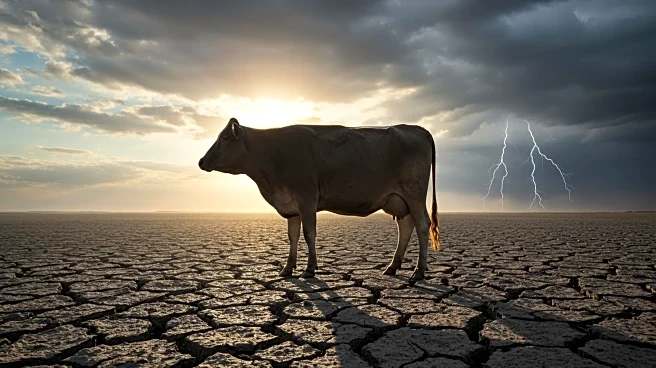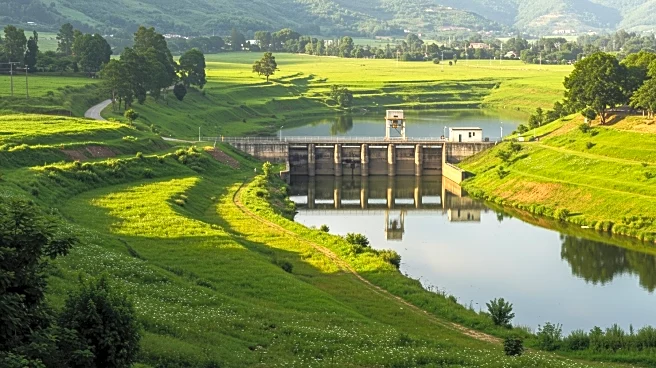Rapid Read • 8 min read
The cost of beef in the United States has reached record highs, with average ground beef prices surpassing $6 per pound and uncooked beef steaks nearing $11.50 per pound. This increase is attributed to prolonged drought conditions that have reduced pasture grass availability, prompting ranchers to send cattle to slaughterhouses earlier than usual. The drought, exacerbated by climate change, has particularly affected cattle-producing regions like California's San Joaquin Valley. Additionally, the U.S. has faced intermittent disruptions in cattle imports from Mexico due to the threat of the screwworm parasite, further contributing to the price surge.
AD
The rising beef prices highlight the broader impact of climate change on the U.S. food system, illustrating a phenomenon known as climate inflation. As droughts and extreme weather events become more frequent, they not only affect agricultural production but also lead to higher consumer prices. This situation poses challenges for both producers, who must decide between immediate profits and long-term herd sustainability, and consumers, who face increased grocery bills. The ongoing climate challenges could lead to sustained high beef prices, affecting the affordability of a staple protein source for many Americans.
If drought conditions persist, the U.S. cattle industry may continue to face production challenges, potentially leading to further price increases. Ranchers might need to explore alternative feeding strategies or adjust herd management practices to mitigate the impact of climate change. Additionally, the threat of the screwworm parasite could necessitate increased biosecurity measures and impact cattle imports. Policymakers and industry stakeholders may need to consider strategies to support the cattle industry and ensure food security amid these environmental challenges.
The situation underscores the need for sustainable agricultural practices and climate adaptation strategies to protect the U.S. food supply. It also raises questions about the long-term viability of cattle ranching in regions prone to extreme weather and the potential need for diversification in protein sources. The economic pressures on ranchers could lead to shifts in rural economies and impact employment in agricultural communities.
AD
More Stories You Might Enjoy











